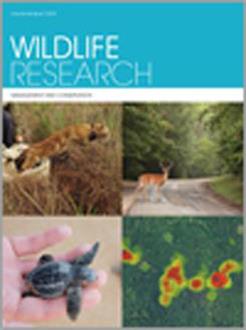Context. Introduced herbivores can have a substantial impact on native plants and animals, particularly in ecosystems that do not share a recent evolutionary history with similar herbivore species. The feral horse, Equus caballus, has a widespread but patchy distribution in Australia, with large populations present in national parks in the Australian Alps. There are few peer-reviewed studies of the impacts of feral horses on ecosystems in this region. However, impacts could be substantial, particularly in wetland and riparian environments that are focal points for horse activity and sensitive to trampling and physical disturbance.
Aims. In the present study, we used replicated horse exclosures to investigate the effects of feral horses on breeding habitat of the critically endangered northern corroboree frog, Pseudophryne pengilleyi, in the Australian Alps.
Methods.Pseudophryne pengilleyi constructs nests and lays eggs in dense litter surrounding small, seasonally flooded wetland pools. In 2010, we sampled the litter depth adjacent to pools at eight long-term P. pengilleyi monitoring sites. In 2011, horse exclosures were established at each of the eight sites, such that less than half of the wetland area was inside the exclosure. In 2015, we measured litter depth surrounding pools inside and outside the exclosures, as well as at three additional sites where feral horses were absent.
Key results. We found that the pool-edge litter was 1.9 times deeper in areas without horses (inside horse-exclosure plots and horse-free sites) than in areas accessible to horses (unfenced areas in horse-occupied sites).
Conclusions. Our study has presented experimental evidence that horse grazing and trampling reduce breeding-habitat quality for P. pengilleyi, which could result in reduced reproduction success.
Implications. Ensuring the persistence of high-quality habitat is crucial for the conservation of P. pengilleyi, particularly given the severity of the decline of this species associated with chytrid fungus. Our results have provided direct evidence of a negative feral-horse impact on the habitat of a threatened animal species in the Australian Alps.






